Middle pleistocene human remains from Tourville-la-Rivière (Normandy, France) and their archaeological context
- PMID: 25295956
- PMCID: PMC4189787
- DOI: 10.1371/journal.pone.0104111
Middle pleistocene human remains from Tourville-la-Rivière (Normandy, France) and their archaeological context
Abstract
Despite numerous sites of great antiquity having been excavated since the end of the 19th century, Middle Pleistocene human fossils are still extremely rare in northwestern Europe. Apart from the two partial crania from Biache-Saint-Vaast in northern France, all known human fossils from this period have been found from ten sites in either Germany or England. Here we report the discovery of three long bones from the same left upper limb discovered at the open-air site of Tourville-la-Rivière in the Seine Valley of northern France. New U-series and combined US-ESR dating on animal teeth produced an age range for the site of 183 to 236 ka. In combination with paleoecological indicators, they indicate an age toward the end of MIS 7. The human remains from Tourville-la-Rivière are attributable to the Neandertal lineage based on morphological and metric analyses. An abnormal crest on the left humerus represents a deltoid muscle enthesis. Micro- and or macro-traumas connected to repetitive movements similar to those documented for professional throwing athletes could be origin of abnormality.
Conflict of interest statement
Figures

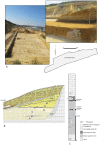
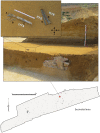
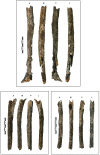
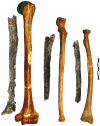
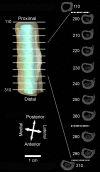
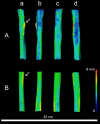
Similar articles
-
New bracketing luminescence ages constrain the Sima de los Huesos hominin fossils (Atapuerca, Spain) to MIS 12.J Hum Evol. 2019 Jun;131:76-95. doi: 10.1016/j.jhevol.2018.12.003. Epub 2019 Apr 10. J Hum Evol. 2019. PMID: 31182208
-
New luminescence ages for the Galería Complex archaeological site: resolving chronological uncertainties on the acheulean record of the Sierra de Atapuerca, northern Spain.PLoS One. 2014 Oct 22;9(10):e110169. doi: 10.1371/journal.pone.0110169. eCollection 2014. PLoS One. 2014. PMID: 25338076 Free PMC article.
-
The temporal bones from Sima de los Huesos Middle Pleistocene site (Sierra de Atapuerca, Spain). A phylogenetic approach.J Hum Evol. 1997 Aug-Sep;33(2-3):283-318. doi: 10.1006/jhev.1997.0155. J Hum Evol. 1997. PMID: 9300344
-
A critical review of the German Paleolithic hominin record.J Hum Evol. 2006 Dec;51(6):551-79. doi: 10.1016/j.jhevol.2006.04.014. Epub 2006 Jul 25. J Hum Evol. 2006. PMID: 17014890 Review.
-
Vindija cave and the modern human peopling of Europe.Coll Antropol. 2006 Sep;30(3):457-66. Coll Antropol. 2006. PMID: 17058508 Review.
Cited by
-
Terminal ballistic analysis of impact fractures reveals the use of spearthrower 31 ky ago at Maisières-Canal, Belgium.Sci Rep. 2023 Oct 25;13(1):18305. doi: 10.1038/s41598-023-45554-w. Sci Rep. 2023. PMID: 37880379 Free PMC article.
-
External ballistics of Pleistocene hand-thrown spears: experimental performance data and implications for human evolution.Sci Rep. 2019 Jan 25;9(1):820. doi: 10.1038/s41598-018-37904-w. Sci Rep. 2019. PMID: 30683877 Free PMC article.
-
The first Neanderthal remains from an open-air Middle Palaeolithic site in the Levant.Sci Rep. 2017 Jun 7;7(1):2958. doi: 10.1038/s41598-017-03025-z. Sci Rep. 2017. PMID: 28592838 Free PMC article.
-
Evaluating the Potential of Q-Band ESR Spectroscopy for Dose Reconstruction of Fossil Tooth Enamel.PLoS One. 2016 Mar 1;11(3):e0150346. doi: 10.1371/journal.pone.0150346. eCollection 2016. PLoS One. 2016. PMID: 26930398 Free PMC article.
References
-
- Carbonell E, Bermúdez De Castro JM, Arsuaga JL, Díez JC, Rosas A, et al. (1995) Lower Pleistocene hominids and artifacts from Atapuerca-TD6 (Spain). Science 269: 826–830. - PubMed
-
- Dennell R, Roebroeks W (1996) The earliest colonization of Europe: the short chronology revisited. Antiquity 70: 535–542.
-
- Roebroeks W, Conard NJ, van Kolfschoten T (1992) Dense forests, cold steppes, and the Palaeolithic settlement of Northern Europe. Curr Anthropol 13: 551–586.
-
- Roebroeks W, van Kolfschoten T (1994) The earliest occupation of Europe: a short chronology. Antiquity 68: 489–503.
Publication types
MeSH terms
Grants and funding
LinkOut - more resources
Full Text Sources
Other Literature Sources
Miscellaneous


